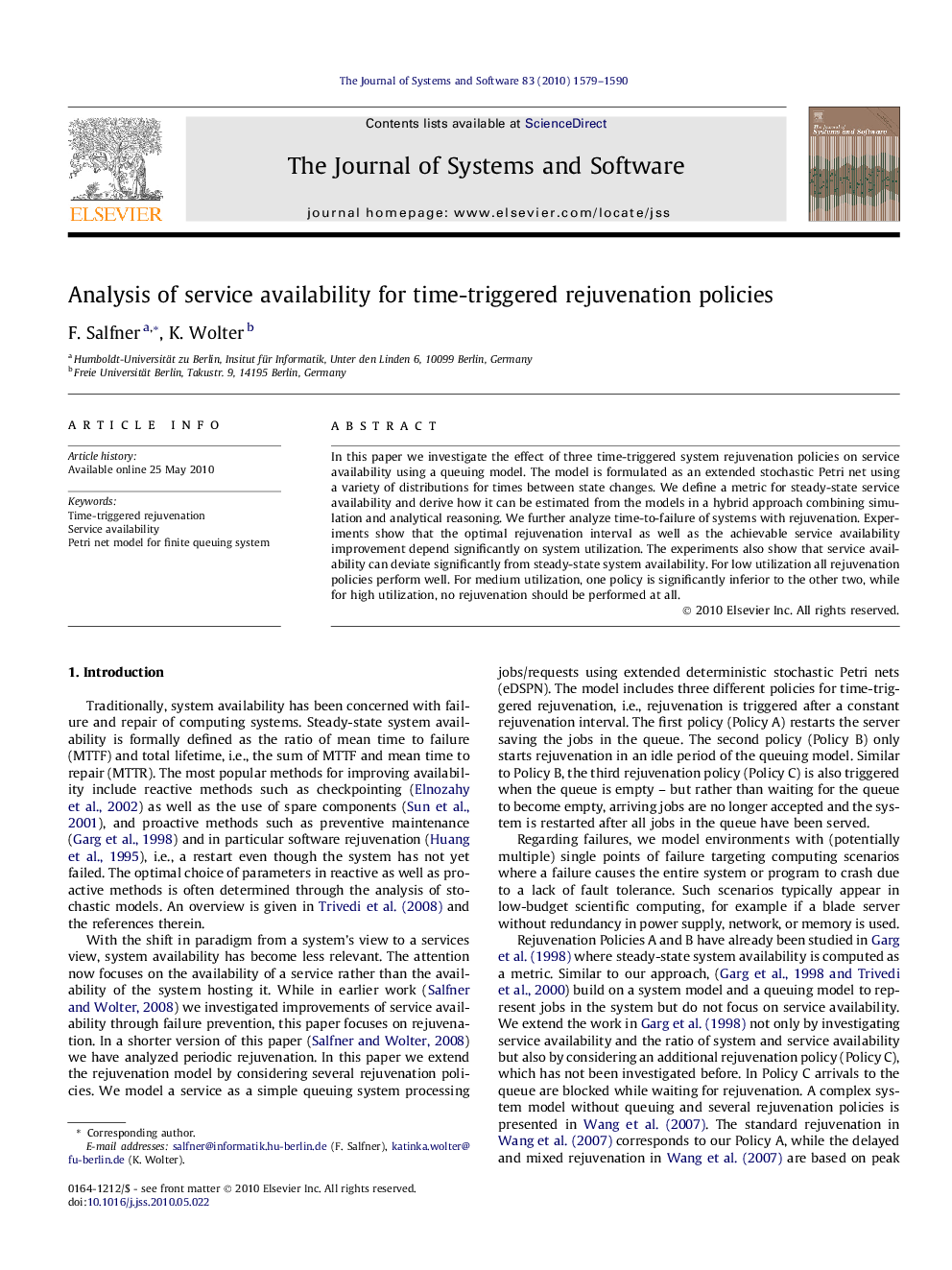| Article ID | Journal | Published Year | Pages | File Type |
|---|---|---|---|---|
| 461423 | Journal of Systems and Software | 2010 | 12 Pages |
In this paper we investigate the effect of three time-triggered system rejuvenation policies on service availability using a queuing model. The model is formulated as an extended stochastic Petri net using a variety of distributions for times between state changes. We define a metric for steady-state service availability and derive how it can be estimated from the models in a hybrid approach combining simulation and analytical reasoning. We further analyze time-to-failure of systems with rejuvenation. Experiments show that the optimal rejuvenation interval as well as the achievable service availability improvement depend significantly on system utilization. The experiments also show that service availability can deviate significantly from steady-state system availability. For low utilization all rejuvenation policies perform well. For medium utilization, one policy is significantly inferior to the other two, while for high utilization, no rejuvenation should be performed at all.
